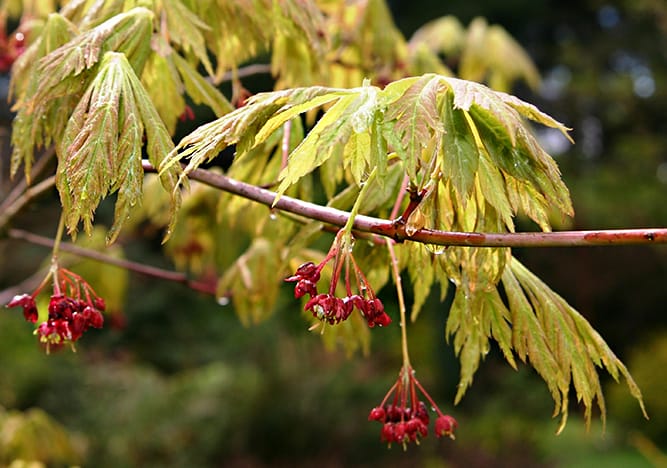So many plants, so little time and only one garden; what a dilemma. There was a time when I thought that my garden would one day be filled to the brim with plants and I would be finished adding new ones. That was before the plant propagators started every garden year with a catalog featuring half a dozen new cultivars of every shrub, tree and perennial. It’s likely I might never be finished.
Alas, how could anyone be finished adding plants to their garden when they have not yet planted the Japanese maple “Autumn Moon” (Acer shirasawanum “Autumn Moon”)? This tree is essential to my multiseason approach to planting with its three season kaleidoscope of foliage color. How could any gardener make it through another winter without the luminescent drama of the yellow, orange and red branches of the shrubby dogwood, Cornus sericea “Midwinter Fire”?
While many of the latest garden books and magazines concentrate on issues of garden design, hardscape installation and marketing the hippest line of patio furniture, the typical gardener also wants help choosing between the myriad of new plant possibilities. After all is said and done, plants are what most gardeners ultimately think of when we think of a garden.
Like every gardener, I have my favorite plants. Let me remind you, however, that I am a fickle plant lover. I often love the last plant I saw this morning more than the plant I loved most in a garden yesterday. Though I struggle to find enough open space in my own garden for any new acquisitions, I continue to keep a list of plants I would consider adding to my next garden. I keep a running list in the back of my garden journal so that I will have the names on hand when I need them.
When I’m out and about without my journal, I write the name of new plants on note cards and add them to my list when I get home. Since the arrival of spring, I have filled up a dozen note cards with a list of plants I want to check out in person at my favorite nurseries. These are plants that I have seen in friends’ gardens or while on garden tours or in the latest catalogs. A few of my latest additions include Cornus alternifolia “Golden Shadows,” Spirea betulifolia “Tor” and Clematis cirrhosa “Jingle Bells.”
Keeping a plant list doesn’t always mean I intend to buy and plant them in my own garden. With the prospect of moving to a new garden in sight, most of my choices are plants I will recommend for other people’s gardens. Just remember, the ultimate decision on plants for your own garden comes down to you. Take others’ advice but temper it with research to make sure that any recommended plants fit the conditions of your specific garden.
High on my list of specialty plants is Rosa pteracantha, more for its mahogany red thorns than for its flowers. I’d like to add this one as a highlight to my late summer garden and of course for the fall leaf color and those luscious hips. One of my favorite dogwoods is Cornus kousa “Wolf Eyes,” a brash form of dogwood with slashes of white around the edge of each gray-green leaf. I love the flower color of rhododendron “Nancy Evans,” whose pale, pink-hued white blossoms age to a butternut yellow. Since my favorite plant list never seems to end, try Pieris andromeda “Spring Snow.”
If I do decide to buy plants from my list, I check them off in my journal and make a note of where I bought them and where I hope to plant them. Later, I often find that I have to go back to my book and change the location. It wasn’t sunny enough for the Viburnum carlesii “Korean Spice” to flower well in its original plot in the garden and this shrub is all about flower scent. It had to be moved.
I don’t know one gardener who hasn’t changed his or her mind about plant placement at one time or another. Like my opinion, my plant choices may change over time. Even, perhaps, from day to day. Being willing to change means we are still learning and growing along with our gardens. Some of my favorite gardens have evolved with the changing ideas of the gardener. The poet Rilke said, “The natural growth of your inner life will lead you slowly to other insights.” I interpret that to mean I should keep my eyes open for the next new Japanese maple.



